Clematis virginiana, clematis, is a native semi-woody rapid growing climbing vine. Its common names include wild clematis, devil's darning needles, virgin’s bower, old man's beard and woodbine. Clematis blooms in late summer around August. It is often confused with the invasive Clematis terniflora (sweet autumn clematis). Distinguishing features will be presented.
Flowers
Clematis virginiana flower clusters grow along new branches that form at leaf axils.
The vines are dioecious - plants have either male flowers or female flowers on a plant. The only way to distinguish between male and female plants is by their flowers or if they fruit.
Below: Left photo: cluster of male flowers, right photo: cluster of female flowers.
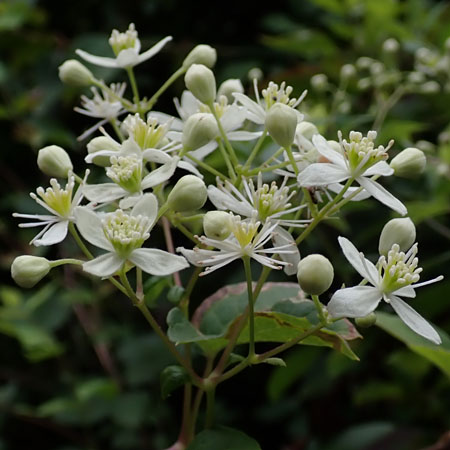
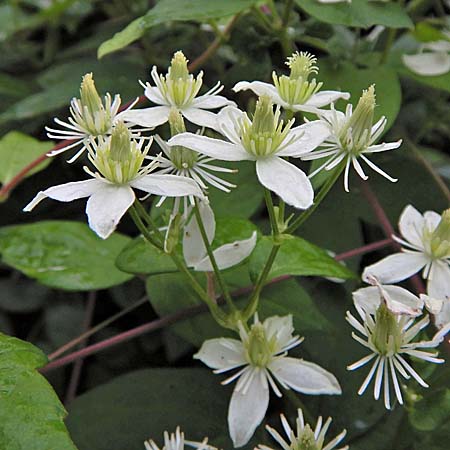
Both the male and female plants produce many small flowers that are white or cream colored and are about 3/4 inch across and form in the late summer. The flowers have 4 sepals, no petals or they can be referred to as petal-like sepals.
Male (staminate) flowers: Fertile stamens, no pistil
The male flowers have about 30 to 50 stamens.
Below: Left photo: Young male flower: stamens with long filaments and big anthers on top that have not released pollen.
Right photo: More mature male flower: stamens are whiter, longer and spread out; anthers of outer stamens have already released their pollen and shriveled.
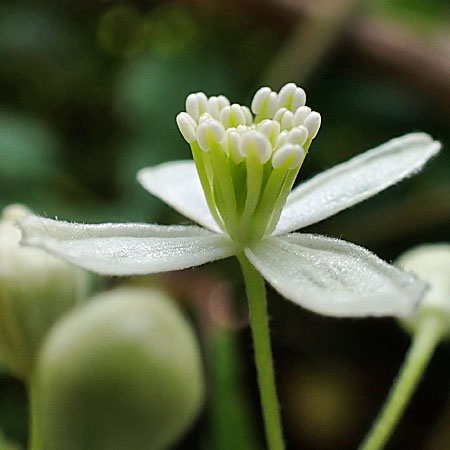
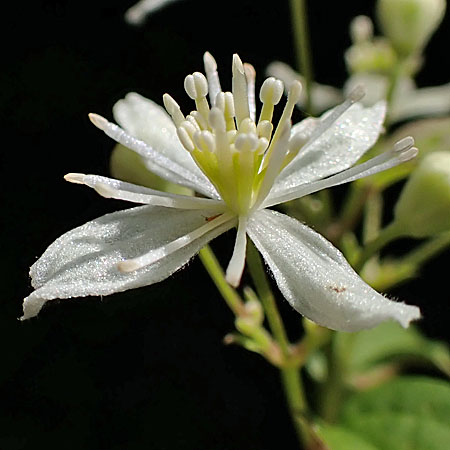
Below: Left photo: Male flower: all the anthers have released pollen and shriveled.
Right photo: Male flower: all sepals have fallen off and almost all of the stamens have fallen off leaving the receptacles.
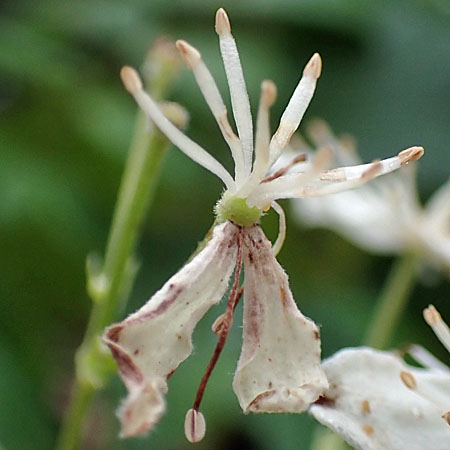
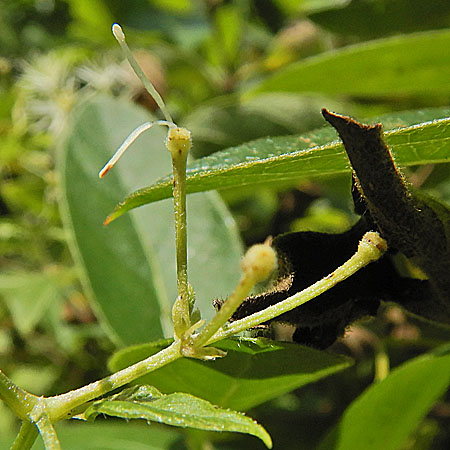
Below: Left microscope photo: Male flower: the two anther sacs are full. Note how wide the anther is relative the width of the filament.
Right microscope photo: Male flower: pollen released from an opened anther sac.
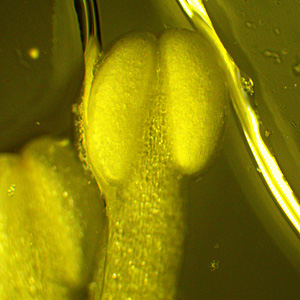
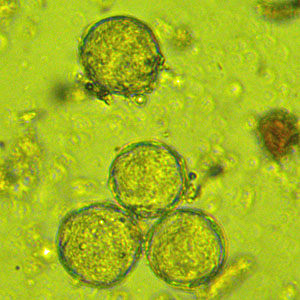
Female (pistillate) flowers: Fertile pistil, sterile stamens - staminodes
The female flower has 40-70 pistils that are circled by some staminoides
Below: Left photo: Female flower: bud opening showing the long styles & stigmas of the pistil and lower outer whorls are all staminodes.
Right photo: Female flower: open flower: .
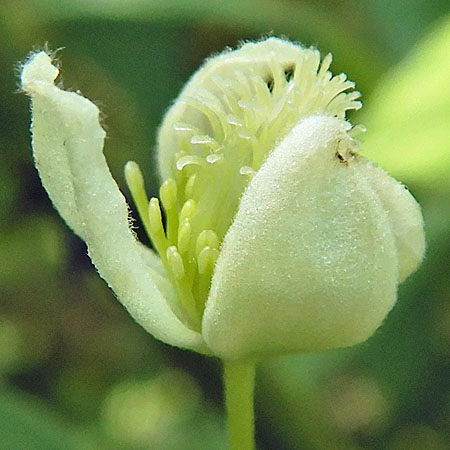
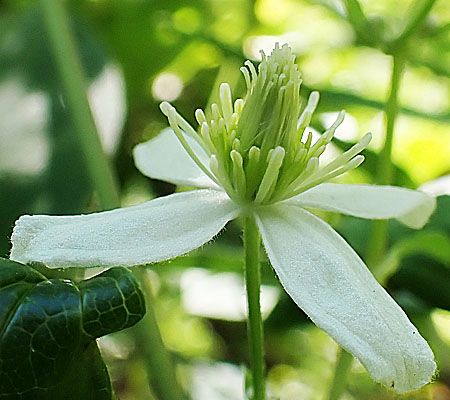
Below: Left photo: Female flower: close-up of styles/stigma and staminodes. Note there are anther-like structures on the staminode but they are not well formed.
Right photo: Female flower: almost all the shriveled staminodes have fallen off and the pistils remain.
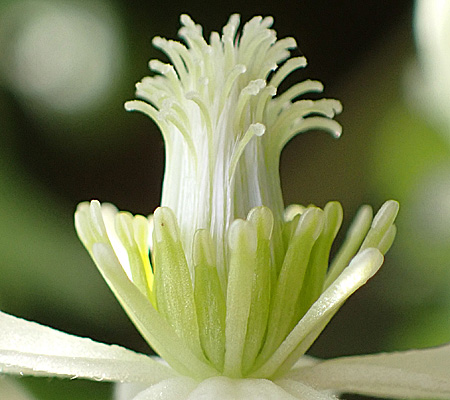
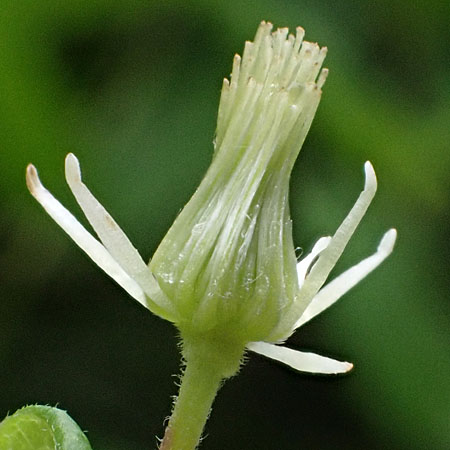
Below: Left microscope photo: Female flower: staminoide. Note the anther-like pollen sacs are flatish. Several sacs were opened and no pollen was found.
Right microscope photo: Female flower: style/stigmas covered with pollen.
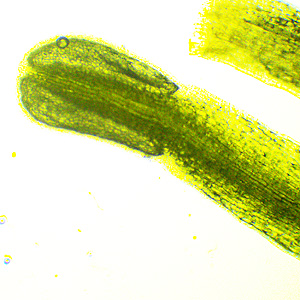
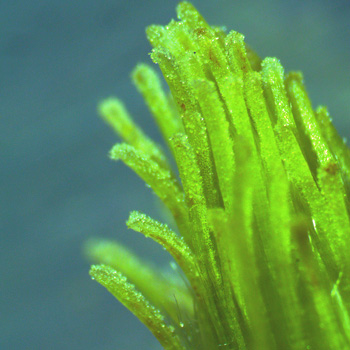
Are there bisexual flowers?
While researching Clematis virginiana, most of the references said the plant was unisexual, flowers were either male or female on each plant. We did not see any bisexual flowers, however, our observations are very limited in scope.
Most notable websites supporting unisexual flowers are:
- GoBotany: uses the unisexual flowers as a feature to distinguish from Clematis terniflora https://gobotany.nativeplanttrust.org/species/clematis/virginiana/
-
Flora of North America (FNA) indicates the plant has unisexual flowers and uses that feature in its key to the clematis.
http://floranorthamerica.org/Clematis_virginiana
http://www.efloras.org/florataxon.aspx?flora_id=1&taxon_id=310004#KEY-1-9
However, a few sites said there were bisexual flowers.
Most notable websites supporting bisexual flowers are:
-
Illinois Wildflowers says: "A single vine can produce all staminate flowers (male), all pistillate flowers (female), or all perfect flowers (both male & female). ... Each perfect flower has a cluster of green carpels at its center, which are surrounded by one or two rows of stamens."
https://www.illinoiswildflowers.info/savanna/plants/virgin_bower.htm -
Several sites give: "mostly polygamo-dioecious" from
Gleason, Henry A. & Cronquist, Arthur J. 1991. Manual of vascular plants of northeastern United States and adjacent Canada. lxxv + 910 pp.
Definition of polygamo-dioecious: "one plant has female and bisexual flowers and another has male and bisexual flowers" click here for reference
Fruit
The female flowers produce a showy cluster of achenes with long silky hairy styles. An achene is a small, dry fruit that does not open to release its single seed. The persistent feathery styles can be up to 2 inches long.
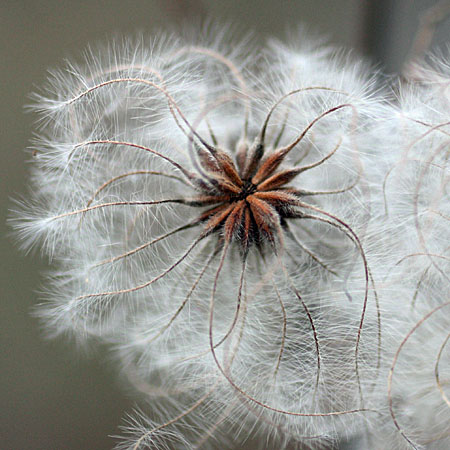
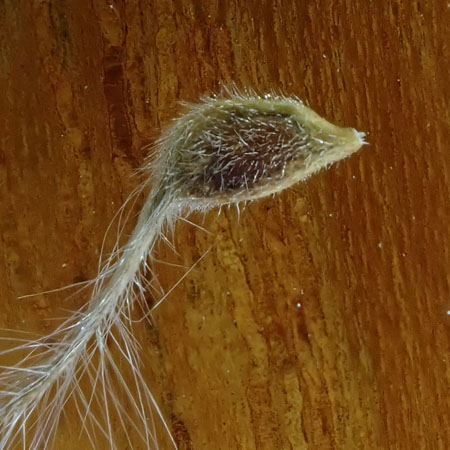
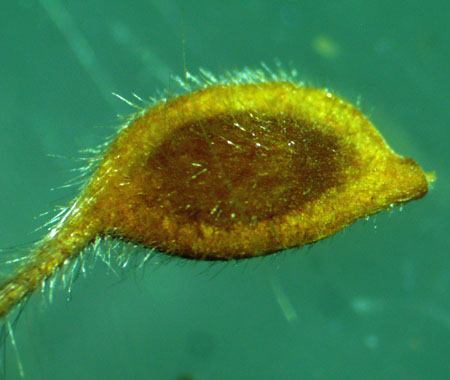
Leaves and Plant
Leaves: The clematis leaves are compound with 3 leaflets. Sometimes the leaves are simple. Either way, they are opposite and the leaflets and simple leaves look alike. The leaves/leaflets are up to 4 inches long and 3 inches wide. The leaf margins are coarsely toothed.
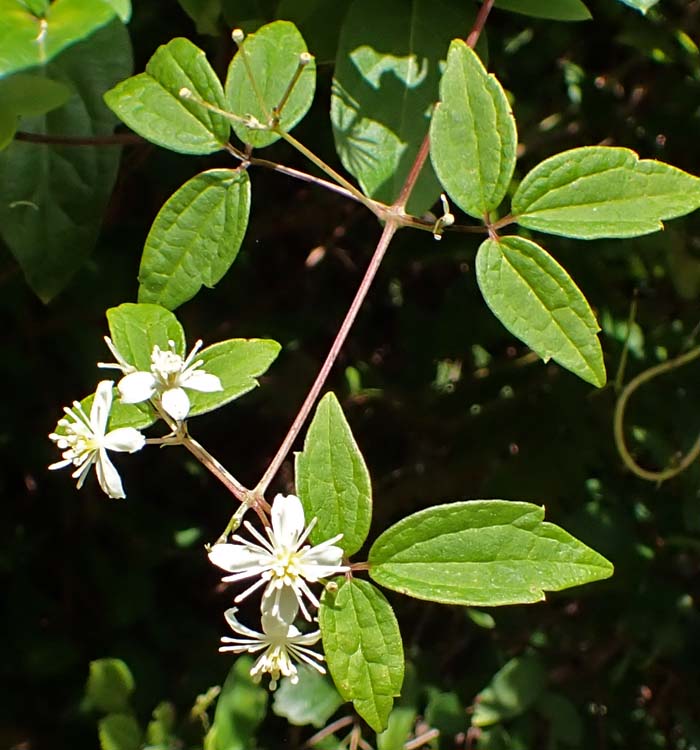
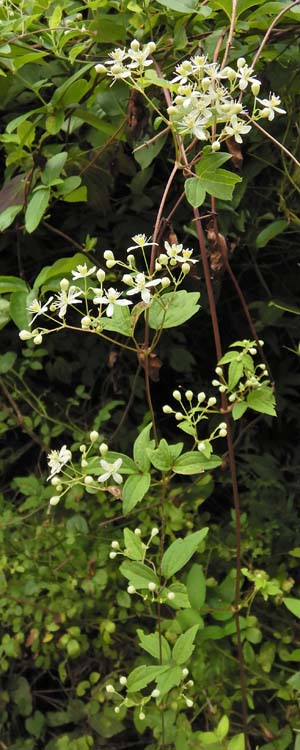
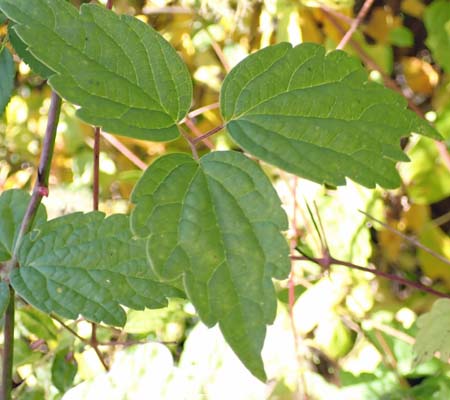
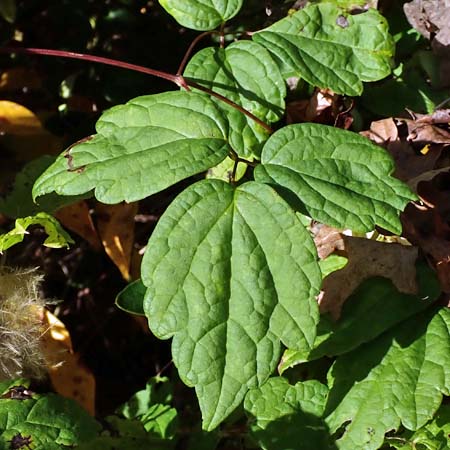
Plant: The Clematis vine can be aggressive and over grow shrubs as in the photo right below. Unlike many vines that use tendrils to attach to their host, clematis uses its leaf stalks to wrap arround other branches. It self-seeds and can become weedy. The plant is toxic if ingested but does support wildlife.
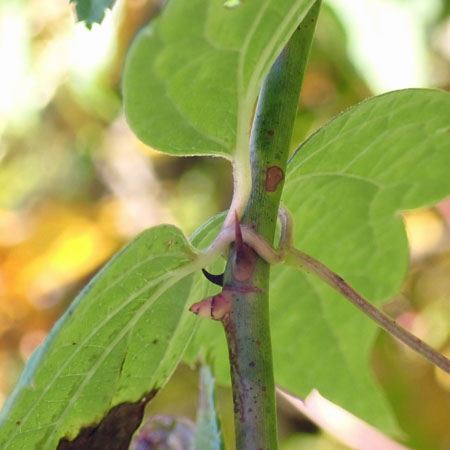
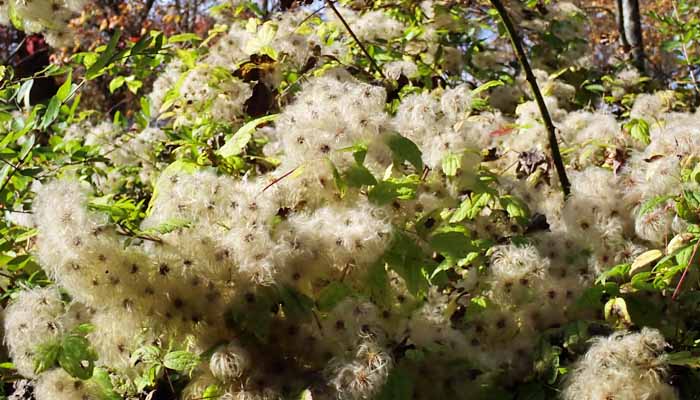
Habitat: Open wooded/disturbed moist areas.
Clematis virginiana vs Clematis terniflora (sweet autumn clematis, not native) :
The most obvious difference is that the leaf margins of C. terniflora are entire, smooth, no teeth.
Please compare with above photos.
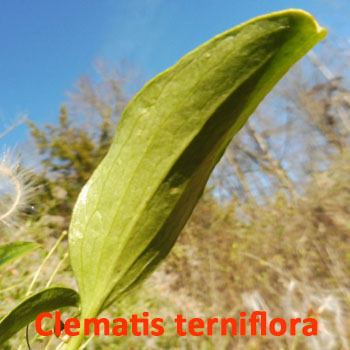
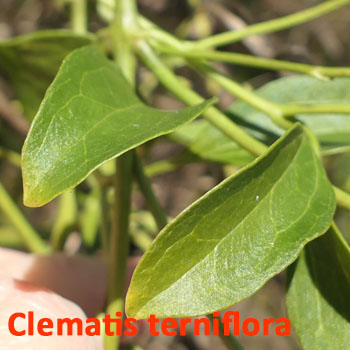
Text by Millie Ling and all photos by Hubert & Millie Ling. Photos: flowers - August 8-24 2023, fruit - November, Somerset & Morris County
Additional information
Additional information / references:
The USDA website shows its distribution in the US and other information,
https://plants.sc.egov.usda.gov/home/plantProfile?symbol=CLVI5
Go Botany:
https://gobotany.nativeplanttrust.org/species/clematis/virginiana/
Good gardening information: Jersey Friendly Yards
https://www.jerseyyards.org/plant/clematis-virginiana/
Illinois Wildflowers has good descriptions:
https://www.illinoiswildflowers.info/savanna/plants/virgin_bower.htm
Loudoun Wildlife Conservancy, VA:
https://loudounwildlife.org/2010/07/virginia-clematis/